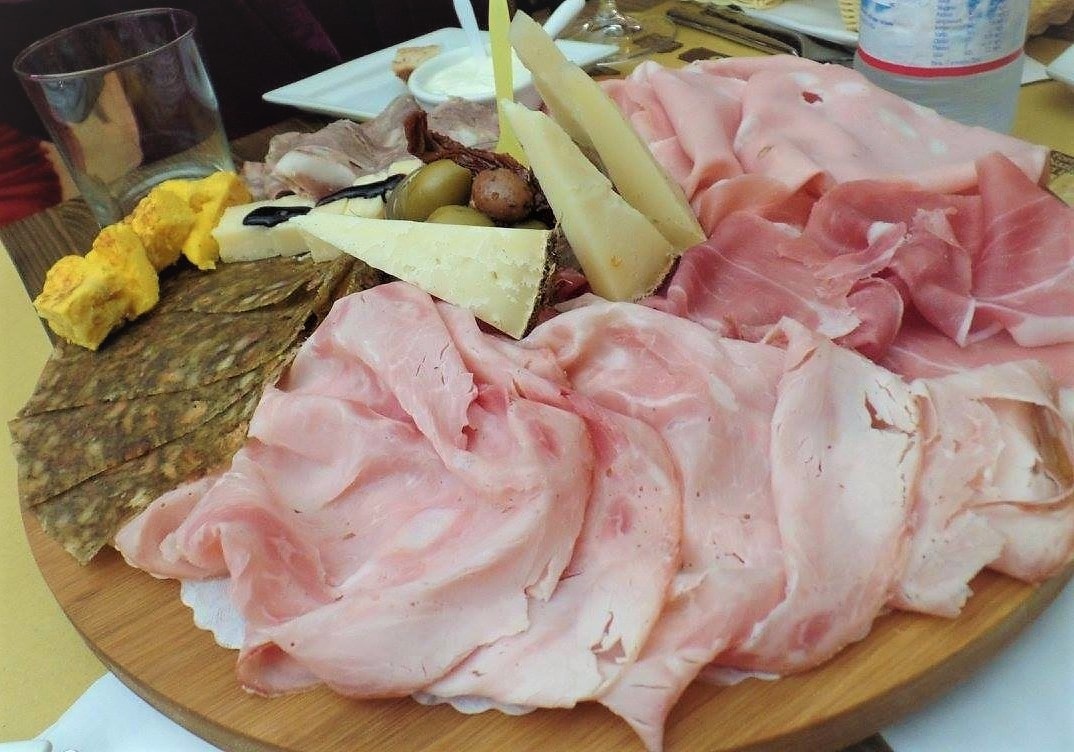14 Underrated Charcuterie Cuts To Track Down And Add To Your Boards

If you haven’t heard of charcuterie by now, it’s probably already at your local gastropub, ready for you to give it a try. The cured meat craze has swept across the country in recent years, to the point where most trendy establishments have at least one or two boards on their menus.
Whether you pair them with quality cheeses and wine or just eat the meats by themselves, it’s poppin’ to be popping a few slices into your mouth prior to the entree.

So far, the most common and ubiquitous charcuterie we’re seeing include salamis and prosciuttos, both of which are delicious in their own rights. There is, however, a whole host of other cooked and cured meats that can be featured on these platters, meats that even those with basic knowledge of charcuterie have yet to witness.
Whether you’re building your own at the nearby butcher shop, or have the opportunity to select some unique cuts on the menu, these are a few different charcuterie you should track down. More than just edgy meats that nobody around you has tried, these cuts are treats as delectable as advertised, or in some cases, even more so.
Coppa di Testa
Not many butchers or meat shops make their own coppa di testa anymore, but those that do, make it a real treat. According to partner Steve Sabicer of Jonathan Gold-renowned Electric City Butcher, it is made by rolling up and cooking an entire deboned pig’s head sous vide-style in Italian spices. You can individually taste each part: the soft and fatty jowl, the gelatinous ear, the tender tongue, and even the snout. It is sliced paper-thin, but each sliver comes with a unique variety of tastes and textures.
Sremska

“Sremska” is actually just the Serbian name for sausage, and is not assigned to a particularly special cut. According to meat expert Claudiu Giorgioni from Orange County’s Goodies in the Pantry, the sausage is traditionally smoked and dried. Made with pork and beef, it is seasoned with salt, pepper, garlic, and paprika, which gives the meat a bright red hue.
Biltong

This is a jerky-like charcuterie you may want to get ready to start seeing everywhere. Industry experts have been naming biltong as one of the popular items to watch for this year as dried meat snacks grow in popularity. Hailing from Southern Africa, Biltong is cured then air-dried before being sliced paper thin. There’s a special machine used to get it to the right thickness, and it should melt in your mouth when you place a slice on your tongue.
Game Meat Pastrami

We all know beef as the meat of choice for pastrami, but that does not mean other animals can be cured and smoked in a similar fashion. At Goodies in the Pantry, for example, Giorgioni will make pastrami out of just about anything: Pork tenderloin, rabbit, goose, venison, and even antelope, which you can see pictured above.
Speck

Prosciutto speck shares a lot of similarities with its more famous cousin, prosciutto di parma. Both are salted, spiced and cured for a long period of time, and both come from pork legs. Unlike prosciutto di parma, however, speck goes through a smoking process, which imparts a different flavor and texture to the meat. It also predominantly comes from the top round of the pork hind leg, whereas prosciutto is usually a whole one.
Lomo

Widely popular in Spain, lomo is air-cured pork tenderloin. It can be done with or without the thick cap of fat you see in the one pictured above, which adds loads of flavor and creaminess to the meat. If you’re in Spain and looking for a cured meat feast, this is a tasty, budget-friendly alternative to jamon iberico, even if the lomo is made from Iberian pigs itself.
Sujuk

There’s several ways to spell this spicy beef sausage, including sudzuka, sujuk, sucuk, and others. Popular across the Middle East and Balkans regions, its cumin, garlic, and red pepper are the predominant flavors you’ll find no matter where you are tasting sujuk. It tends to be dried for several weeks before being sold, and is especially good on flatbreads like lahmajoun.
Culatello

Culatello is known by many as the “king of cured meats” because of its intense flavor and the process it goes through. A pork’s hind leg (the same used to make prosciutto) is deboned, netted, and cured for at least a year before being softened in wine for a couple of days. It is produced exclusively in the flatlands north of Parma, Italy.
Finocchiona

This looks like the salami we’re used to, but is much more regional and not as well known here in the United States, where Genovese salami is more common. Finocchiona is native to Tuscany, and gets its exclusive name and flavor from being cured with fennel seeds. Their aromatic fragrance adds a punch to the salami you will not get from other variants.
Virsli
Photo courtesy of Claudio Gonzalez
This is another generalistic term for “sausage” that can be applied to variants from Vienna, Romania, Hungary, and other places. Typically, this type of sausage is smoked and can then be served boiled or grilled. The spices vary by region, according to Giorgioni, who says that while Romanians typically use a lot more garlic, you may find a lot more hot paprika in Hungarian virsli.
Salumi Rosa

You’ll be hard-pressed to find this cut (pictured in the bottom part of the above platter) outside of Bologna, Italy. The city’s signature charcuterie is made in a style similar to mortadella, but only the pork shoulder meat is ground. Lard is “marbled” into the cut before it’s cooked, giving it the effect of an almost checkered sliver of meat. It’s best eaten thinly sliced with a good loaf of bread.
Eastern Prosciutto
 Photo courtesy of Claudio Gonzalez
Photo courtesy of Claudio Gonzalez
This specifically refers to prosciutto made in parts of Eastern Europe, since the process differs a little bit from Italy. Both are whole, salted pork hind legs, but in Eastern Europe the entire leg is also smoked, making it less salty than the Italian counterpart.
Liver Mousse

Liver mousse is technically charcuterie because the term refers to cold cooked meats. As such, pates like this can be commonly found in butcher and charcuterie shops all over the U.S. The key to cooking these is to seal the top with a layer of animal fat, almost like natural Tupperware. It is then baked in a water bath, bain-marie style, to keep the temperature even and prevent parts of the mousse from overcooking.
























